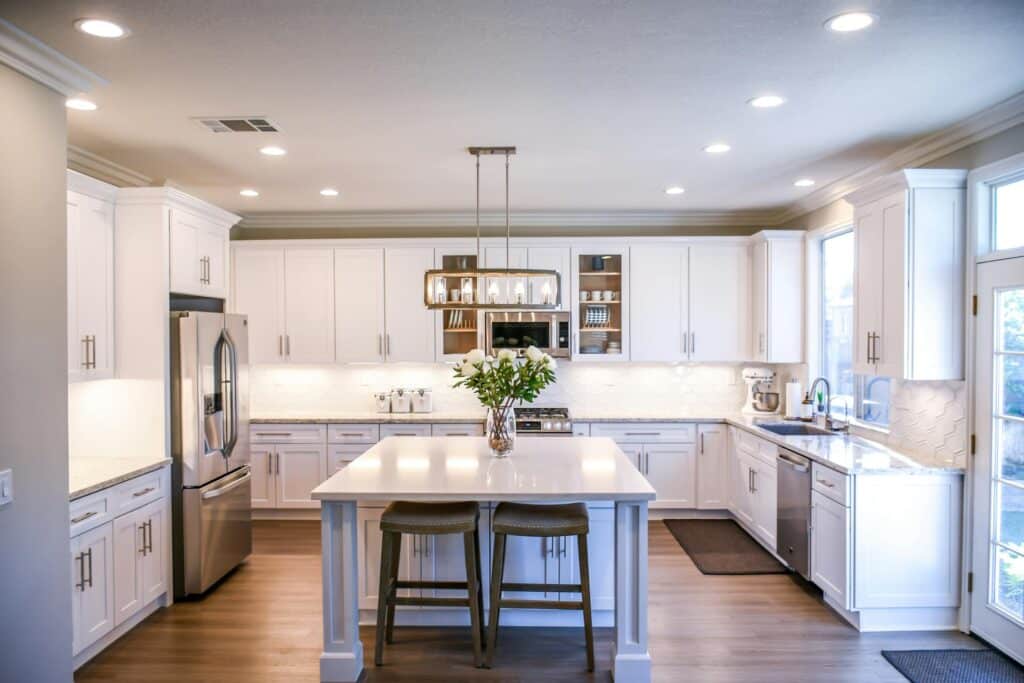What Are the Cons of a Home Warranty?

Facing the question, ‘what are the cons of a home warranty’? Homeowners often find themselves navigating through hidden costs, limited coverage, and frustrating claim processes. Understand the downsides before opting in, as we detail the challenges that could affect your wallet and peace of mind.
Understanding Home Warranties: What Are the Cons of a Home Warranty?
Home warranties come with hidden costs such as service call fees, deductibles, and additional expenses for comprehensive plan add-ons, potentially adding significant financial burden for homeowners.
There are numerous limitations and exclusions in home warranty coverage, with caps on annual coverage limits, non-coverage of pre-existing conditions, and various key exclusions that can result in homeowners paying out-of-pocket for repairs.
Home warranties impose restrictions on repair and replacement services, require the use of network contractors, may replace items with lower quality parts, and can involve extended wait times for service completion.
Hidden Costs and Fees

While home warranties promise to cover appliance repair and replacement costs for your home’s systems and appliances, they aren’t without hidden costs. These additional expenses can quickly add up, creating a financial burden for homeowners, especially when it comes to home repairs.
Service Call Fees Explained
One such hidden cost is the service call fee. Every time a homeowner requests a repair or replacement service, they are charged a service call fee, which typically ranges from $75 to $125. This fee is charged regardless of the outcome of the service call, adding to the financial burden for homeowners.
Unpacking the Deductible
Deductibles in home warranty plans can also add to the overall cost. These can range from $50 to $125 and are charged before any service is provided.
Some plans may offer no deductibles, but these are less common and can still come with higher premiums.
Additional Coverage Expenses
Standard home warranty plans often require additional coverage for certain items not initially covered. This means that homeowners may have to fork out extra money for comprehensive plans or add-ons to cover luxury appliances, special features, and high-end appliances.
Issues due to improper installation and code violations can also be covered under certain circumstances, but only if additional coverage options are purchased. This can lead to unexpected costs for homeowners who thought they were fully covered.
Limitations on Coverage

Home warranty plans often come with a litany of limitations and exclusions. These include incidents deemed as negligence, normal wear and tear, pre-existing conditions, and cosmetic issues.
Dollar Limits and Caps
Home warranty plans set annual coverage limits which cap the payment a company will make towards diagnosing, repairing, and replacing each item. This means that homeowners may be responsible for payments that exceed these limits, resulting in additional out-of-pocket expenses.
Pre-Existing Conditions Hurdle
Pre-existing conditions pose another hurdle for homeowners. Claims related to conditions that were known or visible before the commencement of the home warranty plan are generally not approved. This means that homeowners may find themselves footing the bill for these repairs or replacements themselves.
Exclusions That Matter
There are also several exclusions that homeowners need to be aware of. Home warranties do not cover:
- Windows
- Doors
- Floors
- Smaller appliances
- Structural features like the foundation and support beams.
Issues typically excluded from home warranty plans include:
- Incorrect installation
- Construction-related damages
- Improper wiring
- Missing parts of appliances and systems
Additionally, coverage for issues involving hazardous materials, such as toxic substances or gas leaks, are often not included.
Repair and Replacement Restrictions

One of the main criticisms of home warranties is the restrictions placed on repairs and replacements. These restrictions can make the process of getting a repair or replacement more complicated for homeowners.
Choice of Service Provider
Homeowners using a home warranty service are not permitted to select their own service technicians as home warranty companies require the use of their network contractors for repairs under the service contract. This lack of autonomy in the selection process can lead to concerns over varying service quality, making it essential to choose a reliable home warranty company from the available home warranty providers.
Replacement Quality Concerns
When it comes to replacements, home warranty companies may:
- Replace broken parts with generic items, which may not be of the same quality or reliability as the original branded components
- Potentially lead to more maintenance issues
- Void manufacturer’s warranties on existing components.
Wait Times for Repairs
Finally, the time it takes for a repair to be completed can be a significant issue with home warranties. While home warranty companies often provide 24/7 options for filing service claims, the time to respond and schedule service can vary and is subject to the specifics of the homeowner’s policy.
The Maintenance Catch-22

Homeowners need to be aware that items that have not been properly maintained are generally not covered by home warranty plans. This can lead to disagreements over coverage denial, which we’ll discuss in more detail in the following subsections.
Defining Proper Maintenance
What constitutes ‘proper maintenance’ can often be a point of contention between homeowners and home warranty companies. Proper maintenance is defined by home warranty companies as performing the tasks specified in appliance and system manuals to ensure their correct functioning.
Routine Maintenance Requirements
Routine maintenance necessary for upholding home warranty coverage often includes tasks such as filter changes, system cleaning, and regular inspections. Failure to keep a thorough record of all maintenance activities, including service receipts, maintenance logs, and details of repairs or replacements, can lead to voided coverage under a home warranty agreement.
Disagreements Over Coverage Denial
Different interpretations of what constitutes proper maintenance are a common point of contention between homeowners and warranty companies. These disagreements can result in denied claims, leaving homeowners with unexpected repair costs and a sense of frustration with their home warranty coverage.
The Fine Print Pitfalls

While home warranties seem straightforward on the surface, there can be a lot of complexities hidden in the fine print. Homeowners should read their contract thoroughly to understand which items and situations are not covered under the home warranty plan.
Coverage Limits and Loopholes
Standard home warranty contracts may exclude coverage for repairs or replacements of systems or appliances not explicitly listed within the home warranty contract. Vague terms like ‘negligence’ or ‘normal wear and tear’ within home warranty contracts can result in interpretation issues and affect coverage eligibility.
Contractual Ambiguities
One of the main challenges homeowners face when dealing with home warranties is the vague language used in contracts. This can make it difficult for consumers to clearly understand their coverage and can lead to misunderstandings and disputes.
Renewal and Cancellation Terms
Lastly, it’s important to understand the renewal and cancellation terms of a home warranty. While home warranties commonly offer a 30-day money-back guarantee, cancellation terms may differ based on whether the warranty was acquired during a real estate transaction or for an already-owned home.
Comparing Home Warranty to Other Protections
While a home warranty can provide some level of protection, it’s important to consider other options as well. Homeowners should consider a good homeowner’s insurance policy, manufacturer’s warranties, and building an emergency fund as alternatives or supplements to home warranties.
Homeowners Insurance vs. Home Warranty
Homeowners insurance and home warranties serve distinct roles without overlapping in coverage, providing protection for different aspects of home ownership. It’s important for homeowners to carefully consider their individual needs and understand the differences between these types of protection, including homeowners insurance coverage.
Manufacturer’s Warranty Overlap
Manufacturer’s warranties generally cover specific appliances or systems for a period of time, making a home warranty unnecessary during that period, especially for newly built homes with builder or manufacturer warranties.
It’s important for homeowners to consider how home warranty companies determine these warranties before purchasing a home warranty.
Emergency Fund as a Backup
An alternative to a home warranty, offering financial protection, is building an emergency fund. An emergency fund is a dedicated bank account set aside for unforeseen expenses, and may cover things like:
- urgent medical bills
- home appliance replacements
- significant car repairs
- periods of unemployment
Establishing an emergency fund provides a financial cushion that can prevent reliance on credit cards or high-interest loans during unexpected situations. Financial experts often recommend having enough in an emergency fund to cover three to six months’ worth of living expenses.
Summary
In conclusion, while home warranties can offer some financial protection against unexpected repair and replacement costs, they come with their own set of drawbacks. From hidden costs and limitations on coverage to repair and replacement restrictions and the fine print pitfalls, it’s important for homeowners to fully understand what they’re signing up for.
Frequently Asked Questions
What is the biggest benefit of home warranty?
The biggest benefit of a home warranty is the peace of mind it provides by helping to replace or repair broken appliances and home systems. It can be especially valuable for new homeowners adjusting to the responsibility of maintaining their property.
Are home warranties worth it this old house?
Yes, a home warranty can be worth it for an older house, especially if you’re a first-time homebuyer, planning to sell, or don’t have local repair technicians. It can provide protection for your systems and appliances.
Does a home warranty cover existing problems?
No, a home warranty typically does not cover existing problems or pre-existing conditions, which are issues that existed before the coverage started and could have been detected by a visual inspection. It’s important for home buyers to negotiate with home sellers about addressing pre-existing problems before purchasing a warranty.
What are some hidden costs associated with home warranties?
Hidden costs associated with home warranties include service call fees, deductibles, and additional coverage expenses. Be aware of these expenses when considering a home warranty.
What are some limitations on coverage in home warranties?
Home warranty coverage limitations can include dollar limits, caps, pre-existing conditions, and exclusions. Be sure to carefully review these limitations before purchasing a home warranty.